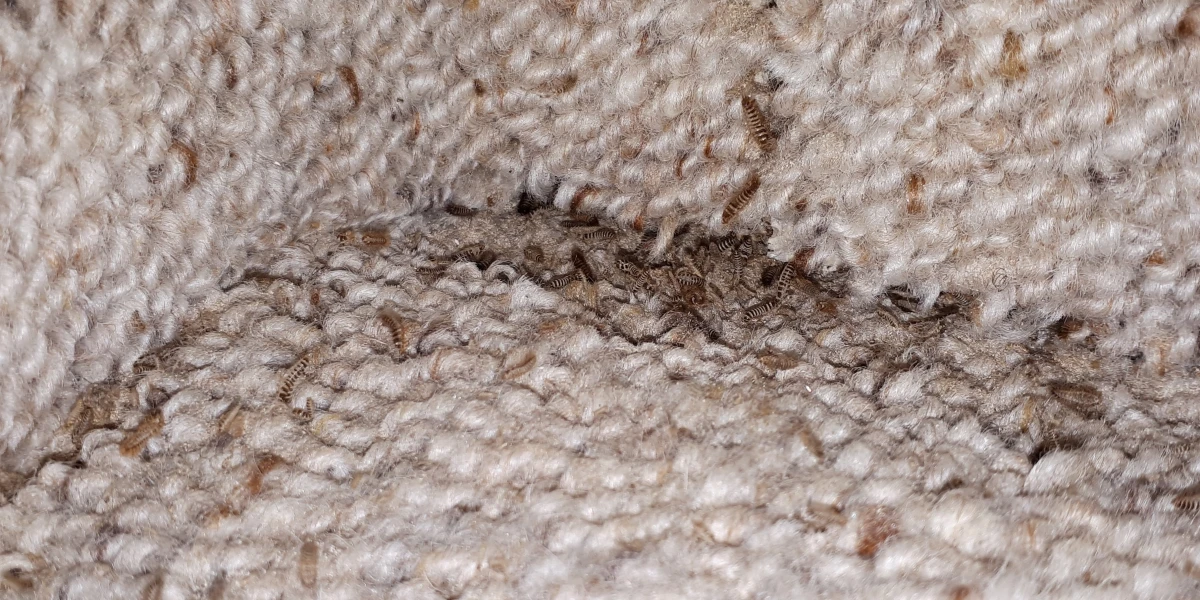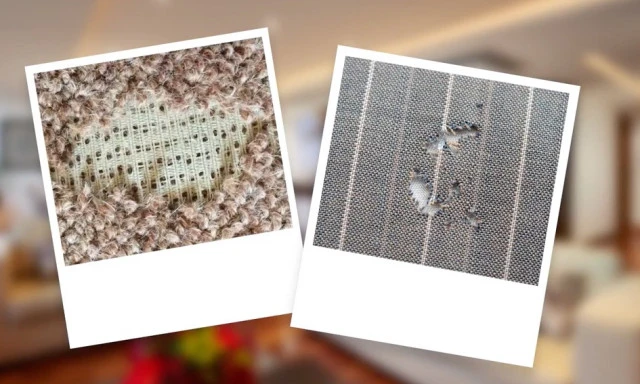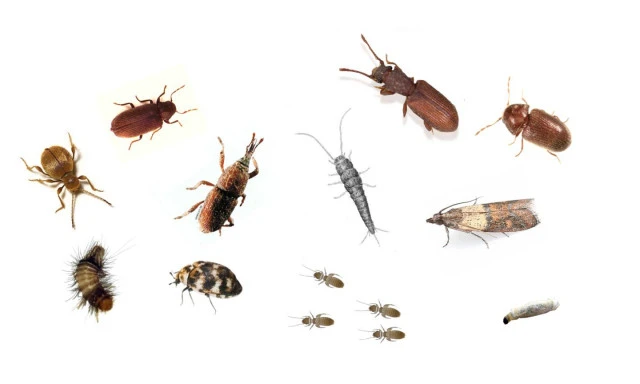Carpet Going Bald?
Have you found your carpet going bald around the edges or under and around furniture? It is increasingly likely that the reason for the damage is carpet beetle or clothes/case moth larvae. With fewer cold winters and warmer heated buildings, carpet beetles and clothes moths are becoming more common and causing more problems in homes. Although very different in appearance and habits, both are pests which eat animal fibres such as wool, cashmere and mohair. So it may not be just your carpet that is damaged by these fibre eating pests; woollen clothes, insulation, rugs and other items may be attacked and damaged.
Carpet Beetle
The most common carpet beetles in New Zealand are the varied carpet beetle (Anthrenus verbasci) and the black carpet beetle (Attagenus unicolor). Adult beetles are 2-3 mm (varied) and 3-5 mm long (black) and resemble ladybirds in shape.
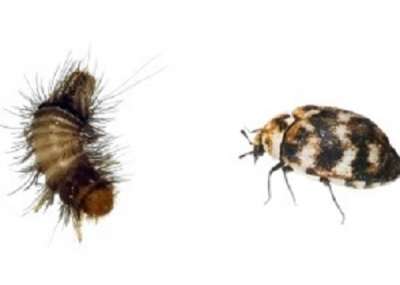
Varied Carpet Beetle larva (woolly bear) and adult
It is the short fat hairy larvae of these insects, known as woolly bears, that do damage to woollen carpets and other items. Eggs are laid in cracks and crevices close to or under wool, fur or feathers. The larvae will grow to 5 mm long and are voracious feeders which will rapidly make holes in natural material. Clean cotton items are not normally attacked although larvae may bore through them on their way out of a feather cushion. The damage is often mistaken for clothes moth damage.
Carpet beetle larvae may often be found in birds’ nests and animal burrows. Once established, they can be difficult to eradicate because the larvae can forage widely and may take some years to complete development. The normal life cycle is one to two years.
Clothes Moth
The common clothes moth (Tineola bisselliella) and the case-bearing clothes moth (Tinea pellionella) are the main pest species. Both will attack and damage carpets, upholstery, clothing and animal specimens. The larvae of the case-bearing clothes moth can damage synthetic fibres for use in their ‘sleeping-bag-like’ case.
The adults of both species are small, dull, grey-brown moths 5-8 mm long with wings folded back close to the body when not flying. The adult moth lays eggs in dark areas in fur, feathers, skin, wool or sometimes silk. The larvae are small pale grubs with darker heads. They are voracious feeders which will grow to 5 mm long. They rapidly make holes in woollen textiles, animal specimens, fur and feathers. The larvae of the case bearing moth will look like small cigar-shaped bundles of fibres as if rolled between finger and thumb; the larva head may be seen sticking out one end.
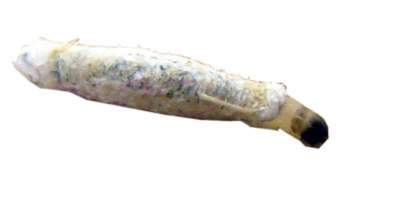
Case Bearing Clothes Moth larva in sleeping-bag-like fibre case
How to Get Rid of Carpet Beetle and Clothes Moth Infestations in Carpets
The same treatment will control both these pests.
- Spray – If you are able to lift the edges of the carpet (~30 cm); vacuum under the edge then spray the floor below and the underside of the carpet with NO Bugs Super. Put the carpet back down and lightly spray the upper surface in a band about a metre wide around the edge and affected areas.
If the edge of the carpet cannot easily be lifted then spray the upper surface relatively heavily using NO Spiders Total Protection. [NO Spiders Total Protection will move through the carpet to the underside more easily than NO Bugs Super.] Fumigate/Bomb – After spraying use NO Bugs Super Bug Bombs or NO Bugs Super Fumigator to quickly knock down adult beetles and moths and treat areas that may not have been sprayed.
NO Bugs Bug Bombs contain the same active ingredients as NO Spiders Total Solution and similar to NO Bugs Super. It will enhance the effectiveness of the targeted spray treatment.
Consider woollen items and other food for fibre damaging pest in roof voids, NO Bugs Bug Bombs are an ideal way to treat roof voids and other voids where insects may be living.Vacuum/Monitor – After treatment, vacuum thoroughly to remove eggs, dead beetles, moths and larvae.
Dispose of the vacuum bag immediately afterwards by sealing in a plastic bag and placing in the rubbish.
Place NO Carpet Beetle Non-Chemical Traps around the room to detect carpet beetle and case bearing clothes moth.
- 1-2-3 Carpet Beetle Control Programme
- 1-2-3 Clothes Moth Control Programme
- Watch the video on How to Get Rid of Carpet Beetle and Clothes Moth
David Brittain
Kiwicare
